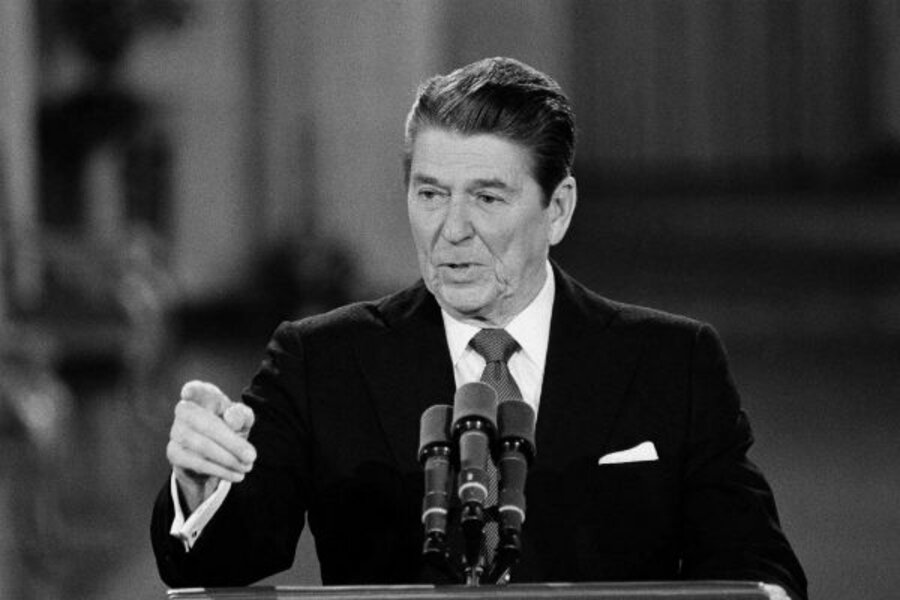Ronald Reagan’s second inaugural address was the 50th inaugural ceremony in the US, and the first to take place in the rotunda of the US Capitol. Freezing temperatures (7 degrees F, with a bitter wind chill) led outside activities to be canceled.
He had to adjust his speech to match the occasion:
“History is a ribbon, always unfurling; history is a journey. And as we continue our journey, we think of those who traveled before us. We stand together again at the steps of this symbol of our democracy – or we would have been standing at the steps if it hadn’t gotten so cold. Now we are standing inside this symbol of our democracy.”
During his speech, Reagan spelled out goals for his second term: decreasing the role of the federal government and reducing the threat of nuclear weapons.
He announced the beginning of what became his “star wars” program, a space missile defense system.
“I have approved a research program to find, if we can, a security shield that would destroy nuclear missiles before they reach their target,” he said. “It wouldn’t kill people, it would destroy weapons. It wouldn’t militarize space, it would help demilitarize the arsenals of Earth. It would render nuclear weapons obsolete. We will meet with the Soviets, hoping that we can agree on a way to rid the world of the threat of nuclear destruction.”






